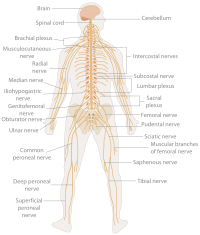
Photo from wikipedia
Abstract In 2019, autonomy and autonomous cars are still heavily debated and investigated, but might be at the peak point of public attention, which might ramp down in the next… Click to show full abstract
Abstract In 2019, autonomy and autonomous cars are still heavily debated and investigated, but might be at the peak point of public attention, which might ramp down in the next years without diminishing the need to develop safe autonomous capabilities. Thinking beyond autonomy, the research and development paradigm of human autonomy teaming, here cooperativity and cooperatively interacting vehicles makes good use of autonomous capabilities and functions and puts these into the service of a cooperative system of systems. In this system, automobiles are cooperating with each other, with other traffic participants and with drivers and passengers on board. This article focuses on one aspect of system cooperation, on the cooperation between the vehicle and inhabitants in normal operations, at the limits of the automation, and at system failure. Modes, transitions, and especially the take-over ability are identified as crucial elements of a system architecture. A model to determine the take-over ability online and an interaction design to couple this model with the automation and the driver is presented and enriched with first results. An outlook sketches the next steps towards a confidence horizon as an interaction element to bridge the dangerous valleys of automation and cooperation with autonomous functions.
Journal Title: IFAC-PapersOnLine
Year Published: 2019
Link to full text (if available)
Share on Social Media: Sign Up to like & get
recommendations!